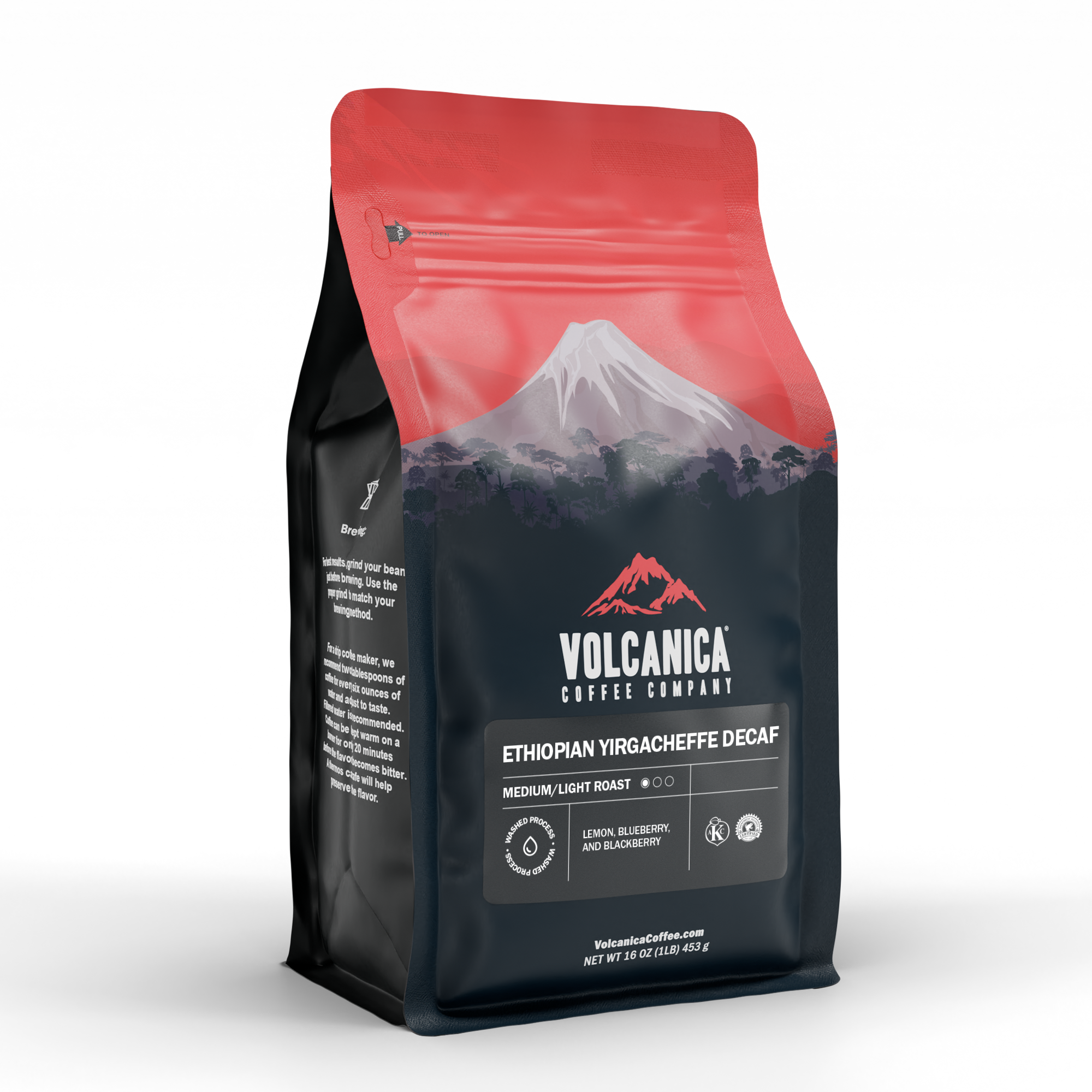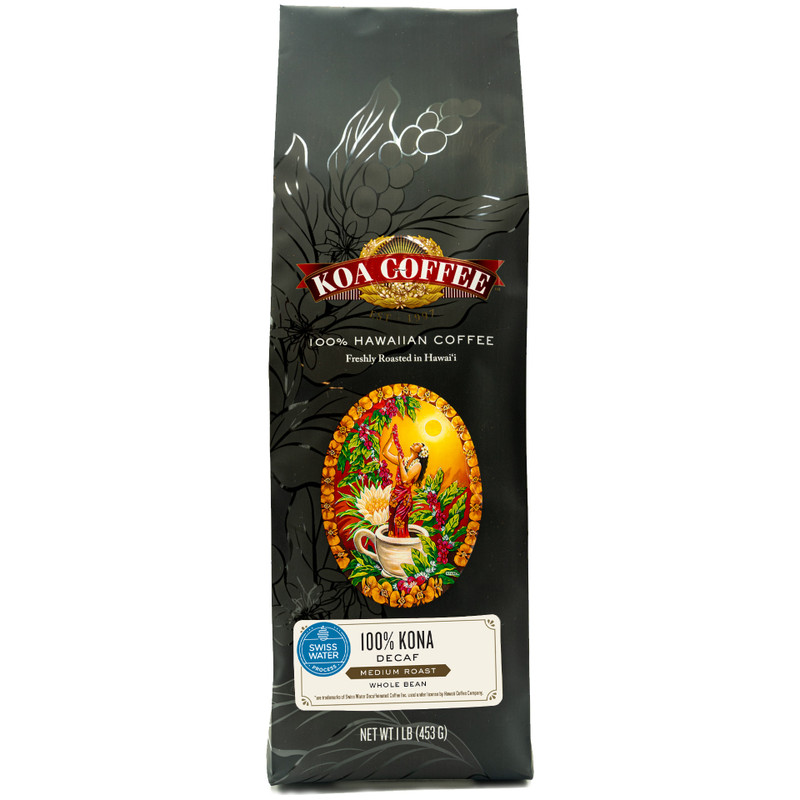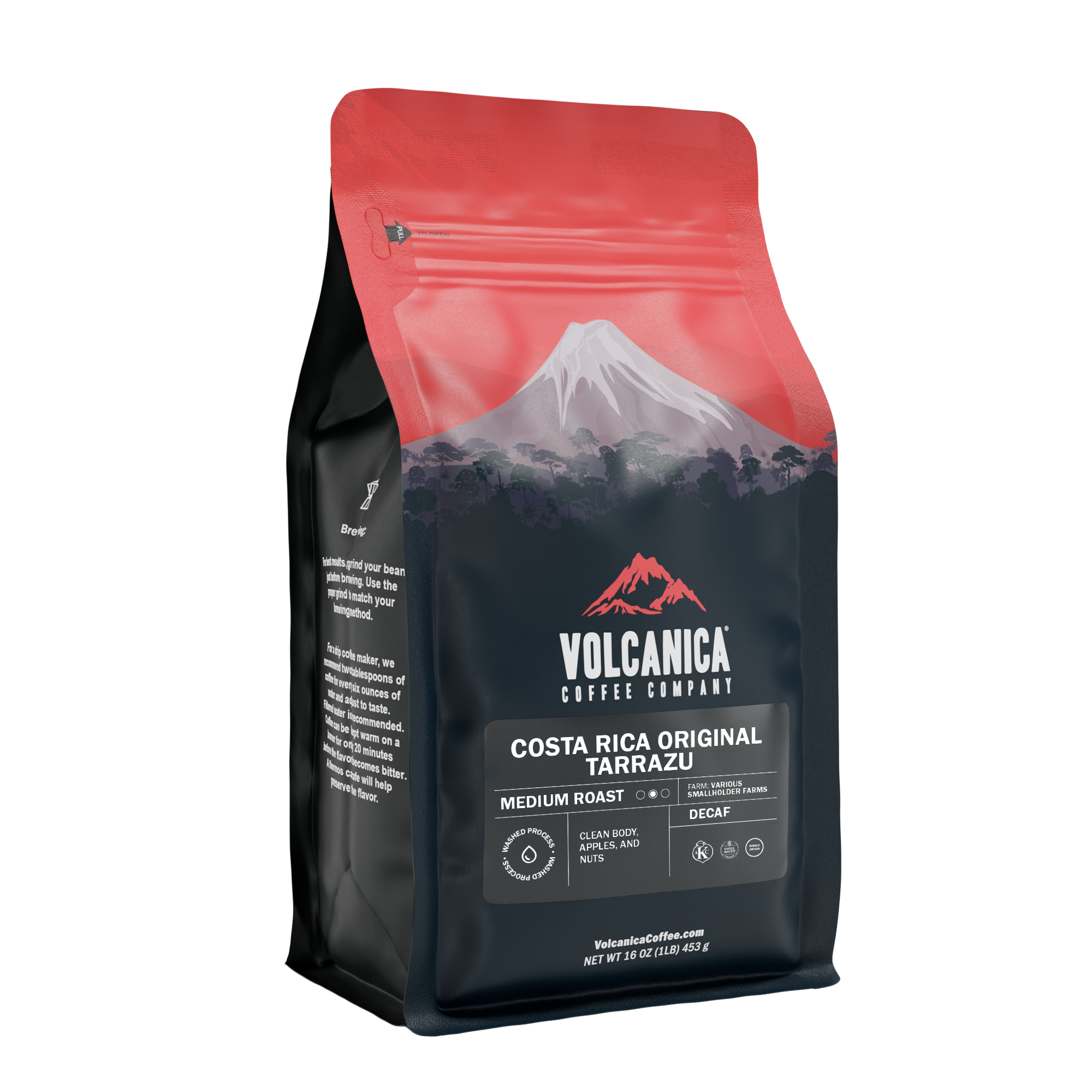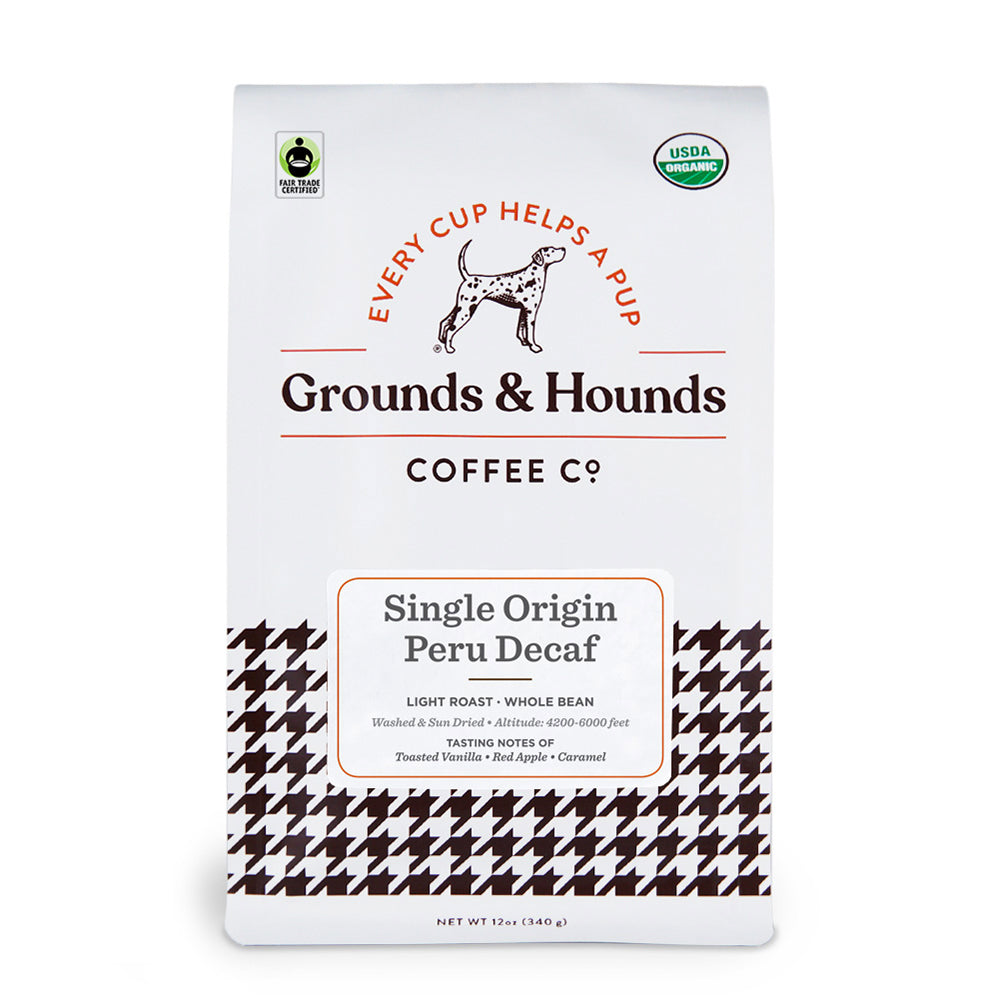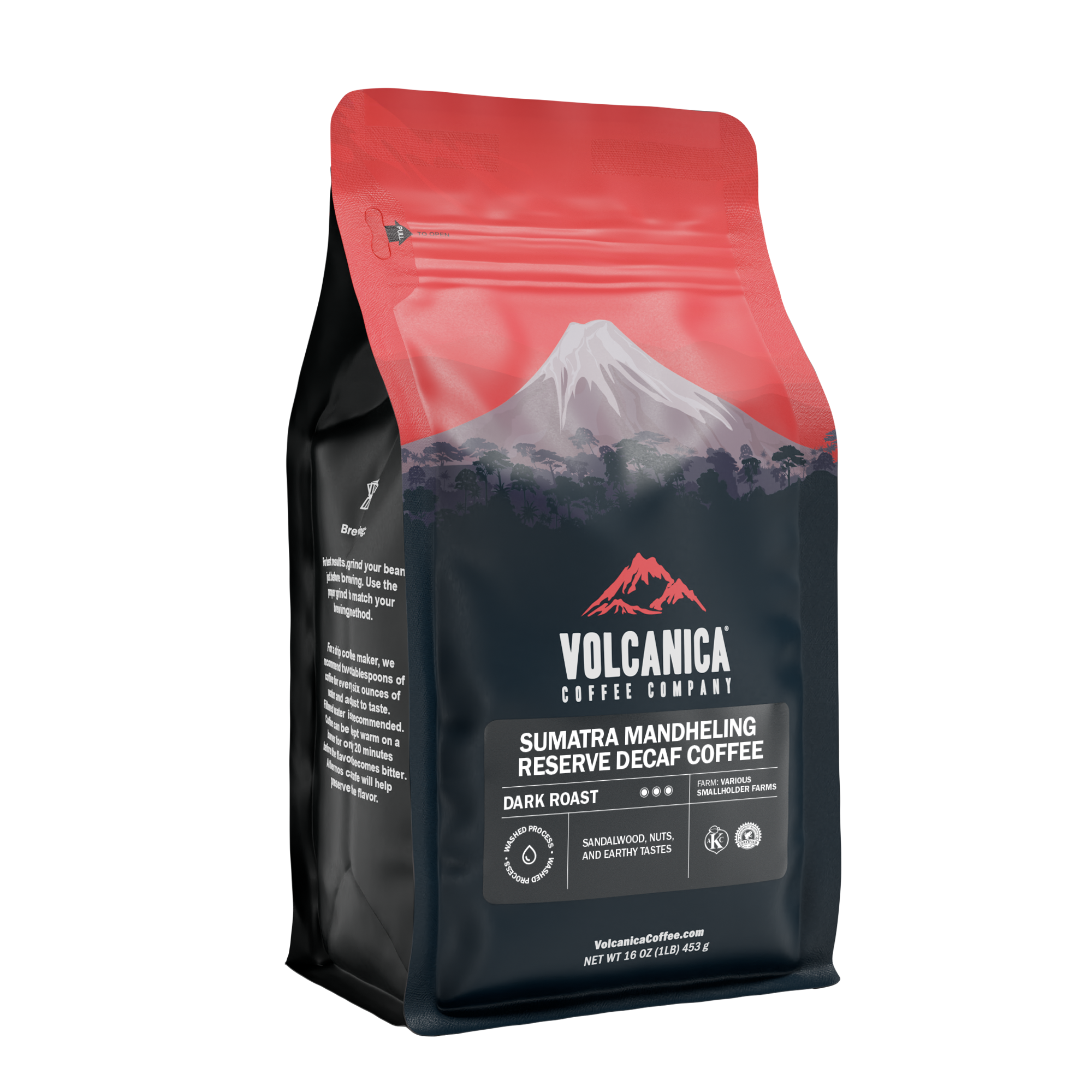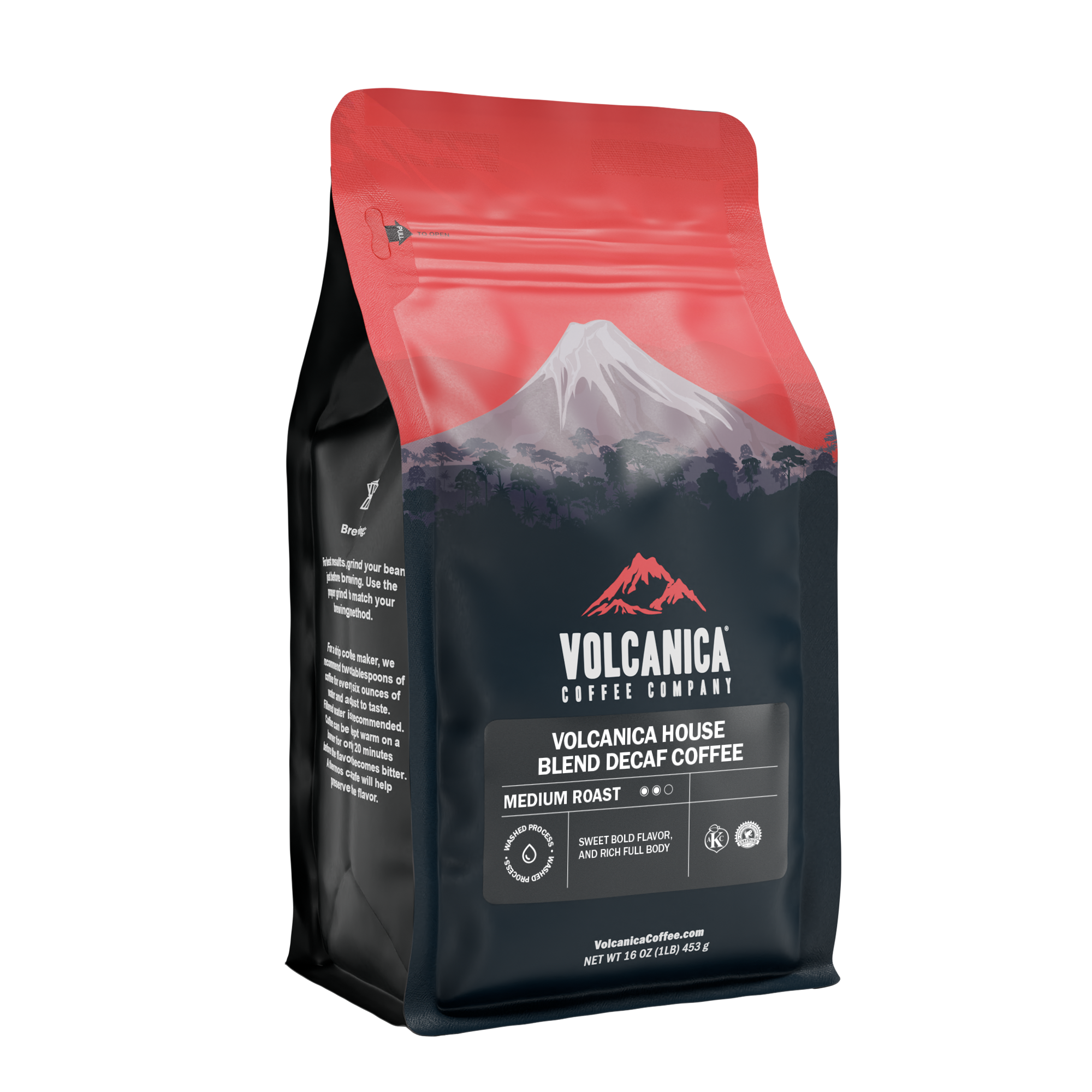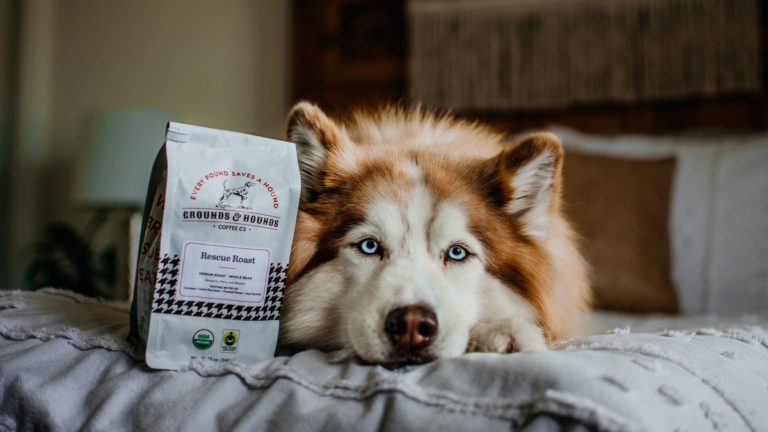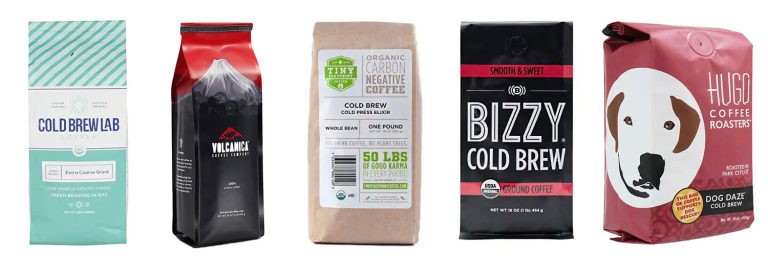10 Best Decaf Coffee for People with No Plans to Give Up Their Coffee Habit
I love coffee but the caffeine is a continual problem, and my caffeine sensitivity is getting worse as I age.
I have to drink decaf instead of regular coffee. If I don’t, I will end up speaking too fast, going to the gym to burn off anxiety, or staring at the ceiling when I should be sleeping.
With no plans to give up coffee, I have thoroughly researched decaf coffee and found many great decaf beans. Here are my results.
What is Decaf Coffee?
The hate over decaf is strongly felt on the internet – from quotes on Instagram with matching hashtags to memes on Facebook, Twitter, and 9GAG. Yet if you trace back the root of all the hate, you’ll realize that all issues thrown at decaf coffee are in the past. That’s because most coffee companies today decaffeinate their coffee beans with chemical-free methods.
In this modern time, decaf coffee is coffee beans, with 97% to 99% of caffeine content removed using methods that do not use chemicals as agents to remove caffeine. People should not be fooled by coffee labels that tell the coffee beans are naturally decaffeinated as there are no such.
Caffeine is essential to the coffee plant itself because it serves as a natural insecticide to the coffee plant. If coffee plants have their caffeine removed, how will they be able to survive from insects? Instead, the process of removing caffeine is done before roasting the beans using the following methods.
How is Coffee Decaffeinated?
There are increasingly more ways to remove caffeine from coffee beans. The two primary ones are Chemical-based processes and the Swiss Water Method.
Chemical-Based Process
Caffeine from coffee beans can be removed using the two types of Chemical-based processes. The first and most used is the indirect-solvent process, and the second, which some people hate the most, is the direct-solvent process.
The difference between the two processes lies with the involvement of the chemical solvent with the coffee beans during the caffeine extraction process. Methylene chloride and Ethyl acetate are the extracting agents used in these methods.
Between the two chemical agents, Methylene chloride is widely used to decaffeinate coffee because it doesn’t pose any health risks, according to the Food and Drug Administration (FDA). Under certain conditions, the FDA approves its use as long as its presence in food should be:
- Its level as an extraction solvent for green coffee beans does not exceed ten parts per million in soluble decaffeinated coffee extract and decaffeinated roasted coffee beans.
Another solvent used for the direct chemical-based process is the ethyl acetate. It is naturally derived from ripened fruits, including blackberries and apples. Yet naturally obtaining ethyl acetate is impractical and costly for many coffee companies. That’s why some roasters opt for commercially produced ethyl acetate using ethyl alcohol and acetic acid.
However, methylene chloride is a much preferred chemical agent than ethyl acetate. Between the two chemical solutions, methylene chloride is a safer choice than ethyl acetate. Still, the FDA assures you that synthetically made solutions like ethyl acetate are always safe.
So, how are these solvents used to extract and remove caffeine from the coffee beans? Below are the caffeine extraction methods using chemical agents.
Direct-Solvent-Based Process
Though direct- and Indirect-solvent-based use chemical agents to derive caffeine, they still differ in one significant way – the type of chemical agent used. Ethyl acetate is used in the direct-solvent process. If the coffee is tagged with the phrase “decaffeinated naturally,” it means that the coffee company used ethyl acetate to extract caffeine from the coffee beans.
Here’s how to decaf the coffee beans using the direct-solvent method:
- The green coffee beans are steamed to open its pores for half an hour.
- Afterward, the beans are washed repeatedly with ethyl acetate for 10 hours until the caffeine separates from the beans.
- The green coffee beans are then drained to remove the caffeine.
- Then the beans are re-steamed altogether to remove any residue of the solvent.
- Lastly, the beans are transferred to a separate container for roasting.
If the decaf coffee brand didn’t mention the process used in decaffeination, chances are the coffee is decaffeinated using both processes: the direct- and indirect-solvent-based methods.
Indirect-Solvent-Based Process
The decaffeination using indirect-solvent involves the following step-by-step process:
- The green coffee beans are soaked in near-boiling water for several hours. This first step allows easy extraction of oils and other flavor elements from the coffee beans.
- Next, the water used in soaking the coffee beans is separated and transferred to another tank.
- On the other container, a chemical agent (either methyl chloride or ethyl acetate) is poured over the swelling beans to rinse it for 10 hours.*
- Then, the rinsed beans were simmered to remove the solvent and the caffeine by evaporation.**
- Lastly, the green beans are reintroduced to the water. The beans are soaked back to the original liquid to reabsorb the coffee oils and flavor elements left during the initial phase.
* While rinsing the green beans with the chemical solvent, the molecules bond with the caffeine molecules.
**When heated, the caffeine molecules burn and evaporate with the chemical solution.
Swiss Water Method
The Swiss Water Method is a chemical-free decaffeination technique. It uses the Green Coffee Extract (GCE) to remove potent caffeine from the green coffee beans. To avoid confusion, the “Swiss Water Method” does not use water from the Swiss Alps. It was recognized as the Swiss Water Method because this decaffeination process was developed in Switzerland.
The Swiss Water Method (also known as the SWP Method, the Dihydro-oxide process, the Activated Charcoal Decaffeination) was first introduced in 1933. It was further developed by Coffee S.A to become a viable commercial decaffeination method by 1980.
The Swiss Water Company finally introduced this chemical-free decaffeination process in 1988 to the market. It is the only company in the world with a decaffeination facility with certifications from the OCIA and Aurora Certified Organic. The Kosher Overseers Association also certified the same facility.
This method of removing caffeine from the coffee beans is unique as it does not rely on solvents. The extraction of caffeine depends on the ability of the green coffee beans (solubility) and the movement of water (osmosis) to take out the caffeine content.
To better understand how the Swiss Water Method works, below is the procedure in extracting caffeine from the introduction of GCE to roasting:
- The green coffee beans are pre-soaked in a caffeine-free green coffee extract (GCE) to extract the caffeine.
- Once the coffee beans expand by 100%, the liquid used in the pre-soaking is removed from the coffee columns. This liquid returns to its original tank.
- After draining the pre-soaking liquid, the caffeine lean green coffee extract (GCE) from another tank flows into the coffee columns. This solution commences the counter-current extraction process. Take note that the GCE is water-rich with soluble coffee components.
- Decaffeination happens where the time, temperature, and flow are controlled to drive the caffeine out from the green coffee beans to the GCE.
- The decaffeinated coffee beans (newest, fourth tank) are sent to the multizone dryer for packing.
- To remove moisture from the coffee bean, the beans undergo an evaporative drying process. The moisture from the coffee beans are converted into vapor and is transferred through the air exhaust stream.
- The caffeine-rich GCE moves from the coffee columns to the carbon columns and is filtered by activated charcoal filters.
- The caffeine-lean GCE returns to its original tank once the filtering is done. This solution will be reused again in the next batch.
The ongoing argument about this method is whether or not the coffee beans eventually lose their distinct flavor from the same solution during the decaffeination process. It happens when the extracted liquid from the first batch blends with the juice from the fresh batch. Thus, the mixing of flavors could mute the subtle notes in each batch.
How to Brew Decaf Coffee?
Most people who do not like decaf coffee probably haven’t brewed this kind of coffee blend properly. Contrary to the belief that decaf coffees aren’t as tasty as regular coffee. Storage, quantity purchases, decaffeination method, grind size, and ground brewed volume contribute to a delicious cup of decaf coffee.
Here’s how you can make a decent cup of the best decaf coffee.
1. Buy your decaf coffees in small batches that are consumable within a month.
Buying in bulk is the worst decision you’ll ever make for decaf coffee if you want the freshest brew in the morning. Instead of ordering pre-ground beans, grinding the whole beans before brewing them is the best way to enjoy their flavors.
If buying a pre-ground is inevitable (for instance, you only have a Pour-over or French Press at home), get only the amount of coffee beans you’d think you can consume in a week. Likewise, choose the type of roast that has an enormous impact in terms of flavor.
Decaf coffee beans are easy to over-roast. Some beans may be harsh on the taste buds, while others are intensely aromatic with little flavor on the tongue.
2. Look for a decaf coffee with the Swiss Water Method as the decaffeination process used.
Of the two processes mentioned, the SW method is the best and safest way of removing caffeine from the coffee beans. It preserves more flavor with the help of the GCE. Best of all, it frees you from worrying that you might be drinking chemicals with your coffee.
3. Find proper storage for your decaf coffee.
It’s essential to keep your decaf coffee beans fresh, and the best thing you can do is store it properly. A lot of flavors and aroma were already lost during the roasting of the coffee beans. So when you purchase a decaf coffee, it’s best to sift through its packaging if it is sealed tightly.
When you open the coffee bag, the best thing to preserve its flavor is aroma is to store it in an airtight container and place it in a dark, dry place with a cool environment. Yet, don’t put your coffee in the fridge because the moisture in such storage is too high.
4. Grind your decaf coffee beans slightly finer than regular coffee.
A slightly finer coffee grounds enables the water to linger longer to extract more flavors. If you happen to grind the beans too fine, it will result in a bitter brewed coffee because of the extracted undesirable acids.
5. Use more decaf coffee grounds when you brew.
The secret to a delicious, flavorful cup of decaf coffee is in the ratio between coffee grounds and water. Do not brew decaffeinated coffees using the ways you brew your regular coffee because the best decaf requires more coffee!
Aim to add 15% to 30% more grounds when you brew a decaf coffee and notice the significant difference when you brew from the usual ratios versus the customized ratios.
Health Benefits of Decaf Coffee
Coffee is a delicious beverage. You can drink it hot or cold. Even if some people can no longer drink regular coffee due to its caffeine content, decaf coffee is their alternative drink. Contrary to the belief that you won’t be getting any from drinking decaf coffee, it has low caffeine levels. We’ve searched for hours on the internet to find the health benefits of decaf coffee.
Here’s what we’ve found.
- Decaf coffee is a primary source of antioxidants in the Western diet though its content is 15% lower than regular coffee. These antioxidants are called hydrocinnamic acids and polyphenols.
- Drinking decaf coffee has been linked to reducing the risk of Diabetes Mellitus, and each cup of coffee minimizes the risk by 7% when consumed every day.
- Decaf coffee gives protective effects on the liver function by reducing the levels of liver enzymes.
- Drinking decaffeinated coffee is also linked to a reduction in the risk of premature death from heart disease.
- Decaf is highly recommended to the elderly as it provides positive effects on age-related mental decline. According to Human cell studies, the components of decaf coffee protect the neurons in the brain. Thus, the risk of contracting Alzheimer’s and Parkinson’s disease is relatively low.
- If regular coffee produces heartburn and acid reflux as a side effect, drinking decaf relieves these uncomfortable side effects.
- When you drink decaf coffee by two or more cups of every day, you reduce your risk of developing rectal cancer by 48%.
How much decaf coffee can you drink in a day?
If you’ve been drinking regular coffee for a long time, you probably know that 400 milligrams (mg) of caffeine (about four 8-ounce cups of coffee) is the recommended amount a healthy person can consume in a day.
So what about decaf coffee? While it contains very little caffeine per cup, decaf coffee should still be drank in moderation. A study has found that people who drank 3 to 6 cups of decaf coffee had an increase in harmful LDL cholesterol.
It’s best to stick to one to two cups of decaf in a day.
Taste Profile Differences Between Decaf and Regular Coffee
A regular coffee drinker will instantly identify if they are drinking decaf or not. Some would love the decaf’s taste while others would detest it. It can’t be helped as decaffeination not only takes away caffeine but the chemicals responsible for the delightful scent and taste we grew to love in coffee.
Yet, the chemicals removed during the decaffeination aren’t clear because it depends on the coffee bean varieties, solvent types, and the process it takes to make a decaf coffee. Still, the coffee beans’ proportional changes can significantly affect the overall taste and aroma of the coffee.
The primary reason for “decaf hate” is the taste. In what other ways is decaf coffee’s flavor different from regular coffee? The answer lies in the composition of the solvent used. A waterless solution can remove all the caffeine in the coffee bean, but its drawback is an awful taste with other chemicals being removed.
If water is used for the decaffeination process, it may not entirely remove caffeine, but it can preserve the bean’s flavor and aroma profiles. Other factors that can affect the taste profile of the decaf include how you roast the coffee beans and how much sugar you add to brew decaf.
Lastly, decaf coffee’s taste profile also lies in each person’s taste profile because every individual has a unique tasting profile. It’s a matter of consideration of some coffee purists to hold the information that decaf isn’t as delectable as regular coffee for the sake of their friends who can’t put up with the jitters of regular coffee nor the idea of giving up drinking coffee.
Our 10 Favorite Decaf Coffee Picks
If your day isn’t complete without the best coffee for your needs, here are our top 10 best caffeine-free coffee blends to try:
1. Volcanica Ethiopian Yirgacheffe Decaf Coffee
The Ethiopian Yirgacheffe decaffeinated coffee by Volcanica is 100% Arabica coffee beans long grown in southern Ethiopia. The coffee beans are dry-processed and decaffeinated using the Swiss Water Process.
- Origin: Yirgacheffe region
- Roast Level: Medium roast
- Cup notes: Sweet, floral, and fruit-toned with thick body decaf coffee.
- Taste notes: With hints of ripe strawberry, pineapple guava, and dark chocolate.
- Recommended brewing method: French Press, Pour-over, Drip
The Ethiopian Yirgacheffe Decaf Coffee, grown in the Yirgacheffe region of southern Ethiopia, is known for its exotic flavor with pleasant acidity and distinctive floral and fruit tones. It is a medium-light roast, medium-bodied coffee, featuring flavor notes of lemon, blueberry, and blackberry, and is processed using the Washed Process. This single-origin decaf coffee is decaffeinated using the Swiss Water Process, a 100% chemical-free method that preserves its unique flavor characteristics and ensures it is 99.9% caffeine-free.
2. Koa Coffee – Swiss Water Process Decaf Kona Coffee
The Kona coffee by Koa Coffee is Swiss Water decaffeinated. This decaf coffee showcases the rich flavors of coffee beans cultivated on the slopes of Mauna Loa. You can smell its aroma bursting out when you open the bag, and even before you put hot water in your cup.
- Origin: Kona region
- Roast Level: Medium roast
- Cup notes: Medium-bodied
- Taste notes: With notes of milk chocolate, honey, and hints of bright, fruity flavor without the bitterness.
- Recommended brewing method: Pour-over, French Press, Drip
This decaffeinated Kona Coffee, processed using the chemical-free Swiss Water method, is ideal for caffeine-sensitive individuals or those seeking a lower-caffeine option. It maintains the authentic flavor of 100% Kona coffee, enhanced by a medium roast that highlights its unique taste from the Mauna Loa volcano slopes and is available in whole bean form for optimal freshness and aroma.
3. Volcanica – Costa Rica Tarrazu Decaf Coffee
This decaf coffee is the decaffeinated version of the Costa Rica single origin. The caffeine content of the Costa Rica Tarrazu is removed using the Swiss Water Process. It is processed traditionally wet and dried in patios.
- Origin: Tarrazu high mountains
- Roast Level: Medium roast
- Cup notes: A full-bodied decaf coffee with a bubbly finish and well-balanced flavor
- Taste notes: With hints of crisp and toasty Tarrazu apples.
- Recommended brewing method: Drip, Pour-over, French Press
The Costa Rica Tarrazu Decaf Coffee is a single-origin coffee from the Tarrazu mountain range, offering a full-bodied, bright, and smooth flavor with subtle chocolate hints. It undergoes a washed process and medium roast, resulting in clean body flavor notes with apple and nut accents. This decaf coffee is made using the Swiss Water Process.
4. Grounds and Hounds – Single Origin Peruvian Decaf
The Grounds and Hounds Single Origin Peruvian Decaf is decaffeinated using the Swiss Water Process. Grounds and Hounds used 100% Arabica coffee beans cultivated in farms with an altitude level between 4,200 to 6,000 feet above sea level. The beans are washed and sun-dried to deliver a delicious decaf coffee.
- Origin: Peru
- Roast Level: Light roast
- Cup notes: Medium-bodied with low acidity
- Taste notes: Features notes of red apples and toasted vanilla.
- Recommended brewing method: Pour-over, French Press, Drip
The Single Origin Peruvian Decaf coffee is made from 100% Arabica and 100% Organic Peruvian beans, decaffeinated using the Swiss Water Process. It features a light roast profile with flavor notes of toasted vanilla and red apple and is characterized by low acidity.
5. Lion Gold Roast Decaf Hawaiian Coffee
The Hawaiian Decaf coffee by Lion Gold Roast is a flavorful decaf great for daily breakfast. The coffee beans are decaffeinated using the Swiss Water Process.
- Origin: Hawaii
- Roast Level: Light to medium roast
- Cup notes: A bright cup of coffee with a mellow taste and citrusy finish
- Taste notes: With notes of brown sugar, milk chocolate and hints of bright, fruity flavor
- Recommended brewing method: French Press, Drip, Pour-over
LION Gold Coffee offers a light roast option suitable for breakfast, available in both regular and decaffeinated versions. The decaffeinated variety retains the full flavor of the original but without the caffeine, featuring a bright, mellow taste with a sweet, slightly citrus finish. The decaffeination process employs the Swiss Water Process, ensuring no harsh chemicals are used and maintaining the coffee's quality.
6. Volcanica – Sumatra Mandheling Decaf Coffee
This Volcanica decaf blend is the decaf and dark roast version of the Sumatra Mandheling single origin. The decaffeination process used is the Swiss Water Process which frees the coffee from caffeine by 99.9%.
- Origin: Sumatera Utara
- Roast Level: Dark roast
- Cup notes: Delightfully smooth with a creamy, heavy body and low acidity
- Taste notes: With hints of brown sugar and winey dried fruit
- Recommended brewing method: Pour-over, French Press, Drip, Cold Brew
A single-origin, decaffeinated coffee from Indonesia that offers a rich, heavy body with low acidity and flavors of sandalwood, nuts, and earthy tastes.
It is processed using the Swiss Water Process for decaffeination and sun-drying, ensuring a 99.9% caffeine-free product without chemical solvents and a low acidity level of 5.3 pH.
7. Kicking Horse Coffee – Swiss Water Decaf Coffee
The Decaf Horse Coffee is a Kosher coffee processed using the Swiss Water Process to remove caffeine content. It is roasted in the rocky mountains to deliver a deep, dark, and delicious coffee you can drink every morning.
- Origin: Central and South America
- Roast Level: Dark roast
- Cup notes: Rich and slightly syrupy with a mellow finish
- Taste notes: With hints of dark chocolate, brown sugar, cacao nibs, and toasted hazelnuts
- Recommended brewing method: Pour-over, French Press, Drip, Cold Brew
Kicking Horse Coffee is a dark roast coffee decaffeinated using the Swiss Water Method, ensuring the coffee retains a deep, dark flavor similar to regular blends. This product is certified organic, Fairtrade, and Kosher, highlighting its quality and ethical sourcing.
8. Cafe Don Pablo Colombian Decaf – Swiss Water Processed
The Cafe Don Pablo Colombian decaffeinated coffee is processed using the Swiss Water Process to remove most of the roasted Arabica coffee beans’ caffeine content. The Don Pablo beans are GMO-free and artisanally roasted in small batches to ensure freshness.
- Origin: Colombia
- Roast Level: Medium to dark roast
- Cup notes: Smooth body and low acidity with a clean finish
- Taste notes: Features notes of caramel and cocoa with hints of citrus undertones
- Recommended brewing method: French Press, Pour-over, Drip
This all-natural, Swiss Water Process decaffeinated Colombian Supremo coffee, is characterized by flavors of caramel and cocoa with a hint of citrus and a smooth, clean finish with low acidity. It is a medium-dark roast made from whole bean Arabica coffee, GMO-free, and artisan roasted in small batches to ensure optimum freshness.
9. Volcanica House Blend Decaf Coffee
The House Blend Decaf Coffee of Volcanica is a blend of high-quality coffee beans cultivated in South and Central America. The decaffeination process used for this decaf blend is Swiss Water to preserve the coffee beans’ original aroma and flavor.
- Origin: South and Central America
- Roast Level: Medium roast
- Cup notes: Full, creamy body with sweet and bold flavor.
- Taste notes: Sweet-toned
- Recommended brewing method: French Press, Drip, Pour-over
The Volcanica House Blend Decaf Coffee is a blend of South and Central American coffees, noted for its sweet-bold flavor and rich full body, with a medium roast and low acidity. It is Kosher certified and employs the Swiss Water Process for decaffeination, which is 100% chemical-free and maintains the coffee's original flavor while removing 99.9% of caffeine. This coffee is sourced from various smallholder farms and undergoes a washed processing method.
10. NO FUN JO DECAF
The NO FUN Jo decaf brew by Jo Coffee is certified organic, 100% Arabica coffee bean with no flavoring added. The beans are decaffeinated using the Swiss Water method.
- Origin: Coffee beans purchased from the top 2% coffee farms around the world.
- Roast Level: Medium to dark roast
- Cup notes: Full body and complex
- Taste notes: With notes of sweet blueberry and milk chocolate
- Recommended brewing method: Pour-over, Drip, French Press
No Fun Jo Decaf is a medium dark roast, whole bean coffee from the Jo Coffee Collection, made from organic Arabica beans and decaffeinated using the Swiss Water Process. The coffee features natural undertones of sweet blueberry and milk chocolate, offering a complex and full-bodied taste without added flavorings. It is USDA Certified Organic, Fair Trade Certified, and Kosher Certified.
Wrapping-up Decaf
Decaf coffee is an alternative coffee beverage for people with caffeine intolerance. Yet, decaf coffee’s taste profile is not the same because factors such as the decaffeination process, roast level, and the type of coffee beans used can affect the taste. Other contributing factors that can affect the taste of decaf are storage method, grind size, and the freshness of the beans.
Yet, learning how to brew decaf roast according to your taste preference can live up to your coffee expectations. When you search for the best decaf coffee to drink, look for the brands with coffee beans that match your palate.
Have you tried decaf coffee? What are your decaf coffee drinking experiences? How do you store and brew decaf coffee to keep its aroma and flavor? Please share with us your decaf coffee thoughts at the comments below.


